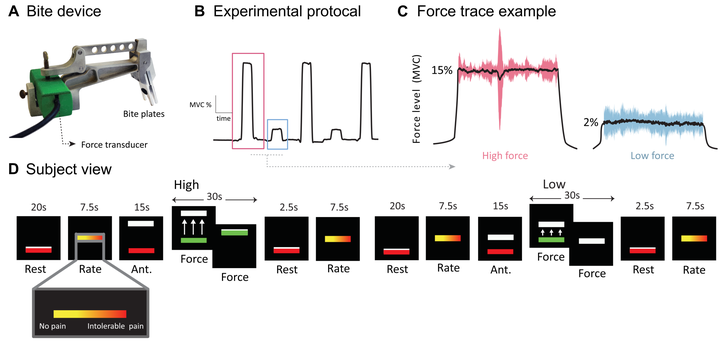 Image credit:Figure 1
Image credit:Figure 1
Abstract
Musculoskeletal pain changes how people move. Although experimental pain is associated with increases in the variability of motor output, it is not clear whether motor-evoked pain in clinical conditions is also associated with increases in variability. In the current study, we measured jaw force production during a visually guided force paradigm in which individuals with chronic jaw pain and control subjects produced force at 2% of their maximum voluntary contraction (low target force level) and at 15% of their maximum voluntary contraction (high target force level). State measures of pain were collected before and after each trial. Trait measures of pain intensity and pain interference, self-report measures of jaw function, and measures of depression, anxiety, and fatigue were also collected. We showed that the chronic jaw pain group exhibited greater force variability compared with controls irrespective of the force level, whereas the accuracy of force production did not differ between groups. Furthermore, predictors of force variability shifted from trait measures of pain intensity and pain interference at the low force level to state measures of pain intensity at the high force level. Our observations show that motor-evoked jaw pain is associated with increases in force variability that are predicted by a combination of trait measures and state measures of pain intensity and pain interference.